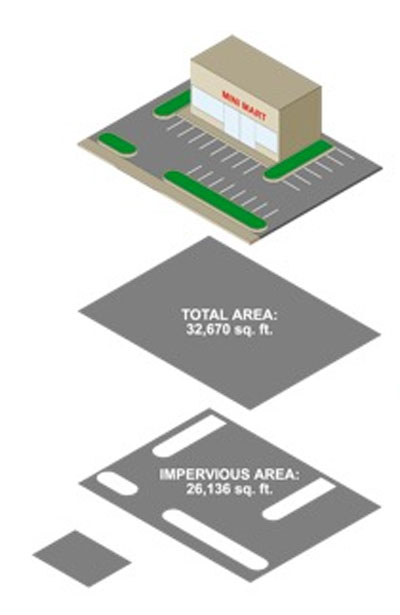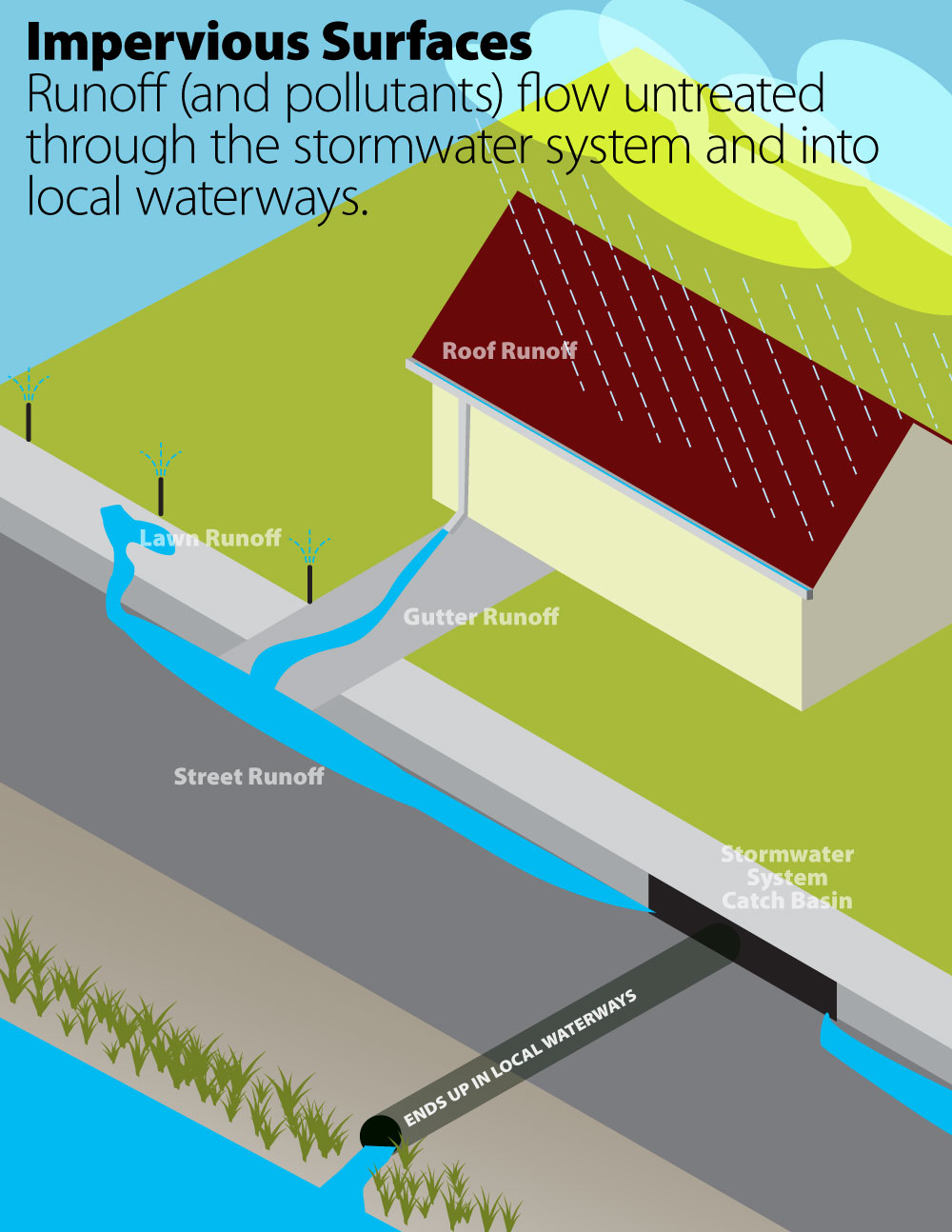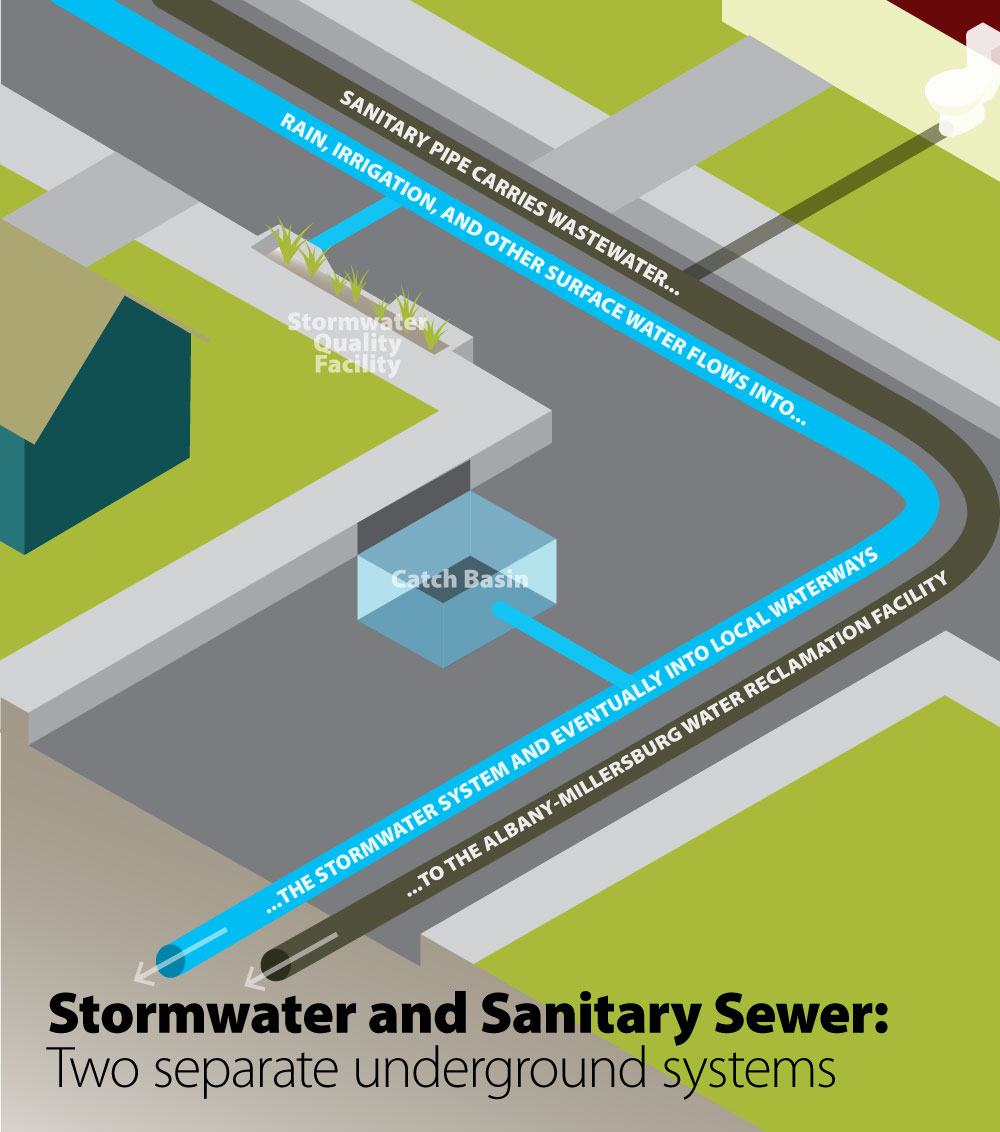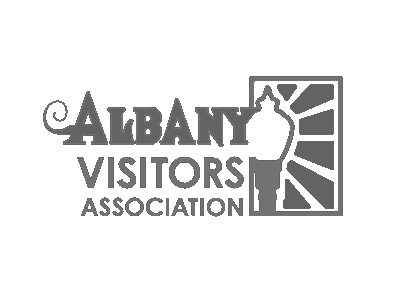Stormwater Master Plan
The 2021 Stormwater Master Plan report provides an updated assessment of Albany’s stormwater conveyance infrastructure. It includes a list of capital improvement projects addressing the needs of Albany’s future land use condition, referred to as the build-out condition, with the application of Albany’s flood control detention standards. The primary focus of this master plan is on the conveyance capacity of the existing and build-out stormwater system. The location of deficiencies, recommended capital improvement projects, and associated project costs are provided. Prioritization categories are also provided to assist in future project selection. This report does not address other aspects of the system such as water quality treatment or operations and maintenance (O&M).
- Details
What is stormwater?
Stormwater is generated from water that falls from the sky, including rain, hail, and snow.
In a natural, undeveloped landscape, most stormwater soaks into the ground to be stored or filtered before it reaches natural waterways.
But in a city most stormwater falls onto impervious surfaces. These are surfaces that do not absorb water like roads, sidewalks, rooftops, or parking lots. Albany typically receives over 40 inches of rain per year. During rain events, significant volumes of water runs off our homes, businesses, and roads and across these impervious surfaces.
What's a stormwater system?
It is important to have infrastructure in place to manage this stormwater runoff. Infrastructure for stormwater includes pipes, ditches, and other facilities to manage this stormwater safely and efficiently. Without these facilities, streets would be dangerous and potentially impassable during rain events, runoff and flooding could cause widespread property damage, and Albany’s waterways and riparian areas would be at risk.
It's a common misconception that Albany’s stormwater drains and pipes connect to the City’s wastewater treatment plant. The stormwater system is separate from the sanitary sewer system. In most of Albany, stormwater flows to inlets, pipes, and ditches that carry it directly to local waterways without any treatment at all.
What challenges does Albany face with our stormwater system?
Consequently, trash, debris, and harmful contaminants are also carried to the waterways. As runoff flows across the ground and into the stormwater system, it picks up pollutants that you can see (debris, dirt, and grease) and others that you can’t (fertilizers and detergents). Basically everything that enters a stormwater system is carried untreated into water that we use for recreating, fishing, and drinking. Runoff can also cause erosion and sedimentation by sweeping away and displacing soil. It can cause localized flooding when storm drains take on too much water at once.
Untreated polluted water has a direct impact on our waterways. You can do a lot to keep our waterways clean.
More Information:
Maintaining the city's stormwater system
Stormwater Utility
Albany began a monthly stormwater utility in 2017 for single-family residences and all other properties with impervious surfaces. You can read more about the development of this utility here.
Storm Drainage System Development Charge (SDC)
The first of five equal phase-in steps for this SDC took effect January 1, 2024. System development charges are fees placed on building permits in the city of Albany. The charge is calcuated per per square foot of newly created impervious area.
Stormwater Management Plan
Guiding our management of the stormwater utility is our Stormwater Management Plan. You can read the entire plan here.
- Details
Past presentations and public meetings
This page is provided as a resource for Albany residents who are interested in reviewing stormwater utility and service charge or user fee material from past City Council meetings and other public meetings.
| Date | Memos | Presentations | Minutes |
|---|---|---|---|
| June 13, 2018 (5% Adjustment Effective March 1, 2019) | Memo | Stormwater Resolution | Minutes |
| June 11, 2018 (2019-20 Rate Discussion and Outreach) | Memo | Presentation | Minutes |
| March 14, 2018 (5% Adjustment Effective April 1, 2018) | Memo | Stormwater Resolution | Minutes |
| March 12, 2018 (2018-19 Rate Discussion) | Memo | Presentation | Minutes |
| February 28, 2018 (Proposed 3% Rate Adjustment failed) | Memo | Minutes | |
| February 12, 2018 (SW Permit & Rate Discussion) | Memo | Presentation | Minutes |
Stormwater Utility adopted |
|||
| November 9, 2016 (Adopt Rate Resolutions) | Memo | Stormwater Resolution Water Resolution Sewer Resolution |
Minutes |
| October 26, 2016 (Adopt Ordinance) | Memo Ordinance |
Minutes | |
| October 10, 2016 (Outreach, Options, & Resolution) | Memo #1-Outreach Memo #2-Options Memo #3-Resolution |
n/a | Minutes |
| June 20, 2016 (Tiers and Credits) | Memo | Presentation | Minutes |
| June 6, 2016 (Initial Rate Calculations) | Memo | Presentation | Minutes |
| April 11, 2016 (Fee Structure Evaluation) | Memo | Presentation | Minutes |
| March 7, 2016 (Fee Structure Evaluation) | Memo | Presentation / Timeline | Minutes |
| February 8, 2016 (Fee Structure Evaluation) | Memo | Presentation | Minutes |
| November 9, 2015 (Funding Strategies) | Memo | Presentation | Minutes |
| August 24, 2015 (Operations) | Memo | Presentation | Minutes |
| June 8, 2015 (Regulatory) | Memo | Presentation | Minutes |
| March 9, 2015 (What is stormwater?) | Memo | Presentation | Minutes |
| January 12, 2015 (Overview) | Memo | Minutes | |
- Details
Common Stormwater Utility Questions
Q: Why would I get charged for the rain that falls on my property? I don’t have any control of whether it rains or not.
A: A stormwater utility is a means of fairly apportioning costs to properties in the City that use and/or benefit from the City’s stormwater system. Developed land creates stormwater runoff that the City must manage through inlets, pipes, ditches, and other facilities. The City incurs costs from basic operations and maintenance, replacing old infrastructure, and complying with state and federal regulatory requirements. No other source of funding is available to adequately cover these costs that result in many benefits for Albany residents such as minimized street flooding, preventing disruption of service, lower cost repairs through proactive response vs. emergency response, improved riparian habitat, and cleaner waterways.
Q: Doesn’t stormwater go into the sewer pipes and get treated at the City’s sewer plant?
A: No. Albany has a separate stormwater system consisting of an estimated 135 miles of stormwater pipes and 70 miles of ditches that discharge to various waterways without treatment. In response to regulatory requirements, Albany has started to install some planters as natural stormwater treatment systems with road projects but most of Albany’s stormwater is discharged to waterways without treatment.
Q: Do other communities in Oregon charge for stormwater services? What do they charge?
A: Yes, approximately 40 other Oregon communities charge a separate fee for stormwater services. For a single family residential home owner in 2018, the service charges ranged from $1.00 per month in Sweet Home to $30.01 per month in Portland.
Q: Can Albany choose not to comply with stormwater regulations imposed by the Federal EPA and Oregon DEQ?
A: If regulated entities do not comply with their stormwater permit requirements, EPA has the authority to impose penalties of up to $37,500 per violation per day and the Oregon DEQ can impose penalties of $25,000 per day per violation. When Salt Lake County, Utah failed to develop, implement, and enforce a stormwater program as required in their stormwater permit, they were required to pay a civil penalty of $280,000 and to also fully comply with their permit requirements [Consent Decree in United States, et al. v. Salt Lake County, Utah (DOJ Case No. 90-5-1-1-10984)].
In addition, there is the possibility of third-party citizen lawsuits to require compliance. If the citizen lawsuit is successful, the City would also be liable to pay the third party’s attorney’s fees. In addition to civil penalties, there is the possibility of criminal prosecution if the violation was intentional.
Q: My property doesn’t drain to the City’s stormwater system; why should I have to pay a stormwater fee?
A: Regardless of where a property drains, properties receive services from a properly managed stormwater system. Also, regulatory requirements are imposed on the city as a whole, not property-by-property. An example of a citywide service would be managing the stormwater system so the streets don’t flood. These systems have operations and maintenance costs, require periodic repair or replacements, and are subject to state and federal regulatory requirements. For more information, refer to the October 10, 2016. council memo.
Q: Does my stormwater bill come on the same bill as my sewer and water bill?
A: Yes, you receive one bill from the City for sewer, water, and stormwater. The charges are shown separately.
Q: Why is gravel considered an impervious surface for stormwater billing of non-single family parcels?
A: From a technical perspective, gravel is defined as an impervious surface. In fact, the two primary methods used to estimate stormwater runoff, the Rational Method and the Natural Resources Conservation Service (NRCS) Technical Release No. 55 (TR-55) both define runoff coefficients for gravel surfaces that are very similar to paved surfaces. The Rational Method runoff coefficient for pavement is 0.90 compared to 0.85 for gravel. The TR-55 method runoff coefficient for pavement is 98 and the runoff coefficient for gravel is as high as 91.
This is a common practice among utility providers and is supported by technical calculations discussed above. The topic of gravel was discussed extensively at the October 10, 2016, council meeting. For more information, refer to the October 10, 2016, council outreach memo.
- Details
Stormwater rates: current and forecast
Albany’s stormwater rate structure has two components: a base charge and an impervious surface charge. The base charge is the same for all accounts; everyone pays the same charge to recover the costs of billing and general stormwater system use. The impervious surface charge is based on the amount of impervious surface (roofs, pavement and gravel) on each property. A general description of how rates are calculated follow and more can be found in the stormwater rate resolution (Resolution 6676 for 2018 rates and Resolution 6713 for 2019 rates).
Single-Family Residential (SFR) Bill Calculation
For single-family residential properties, the impervious surface charge is the same for all customers and is based on the typical amount of impervious surface on single-family residential properties (Equivalent Residential Unit or ERU). Rates for single-family residential customers are also tiered where those customers with smaller structures pay slightly less and those with larger structures pay slightly more. In 2018, most single-family customers are in the middle tier and pay $7.08 per month.
| Base Charge | $5.03 | |
| + | Impervious Surface Charge ($2.05/ERU x 1 ERU) | $2.05 |
| = | Total Stormwater Bill | $7.08 |
Non-Single Family Residential (NSFR) Bill Calculation
For other properties (businesses, apartment complexes, government properties, etc.), the impervious surface charge is based on the number of Equivalent Residential Units (ERUs) of impervious surface present on the property. The number of ERUs is determined by calculating the amount of impervious surface on the property and dividing it by the typical impervious area found on residential properties in Albany (3,200 square feet). The number of ERUs is multiplied by the impervious surface rate per ERU.
This illustration shows an NSFR bill calculation using 2018 rates for a property that has 26,136 square feet of impervious surface:

| 26,136 sq. ft. of impervious surface | |
| ÷ | 3,200 sq. ft. / ERU* |
| = | 8.17 ERUs |
| Impervious Surface Charge: ($2.05/ERU x 8.17 ERUs) |
$16.75 | |
| + | Base Charge | $5.03 |
| = | Total Stormwater Bill | $21.78 |
Non-single family residential customers can also pursue specific credits in order to help reduce their bill. NSFR credits are possible for approved on-site structural stormwater controls that either reduce stormwater volume or improve stormwater quality. Examples of structural stormwater controls include bio-retention, vegetated filtration, infiltration, or media filter facilities. For new development or redevelopment projects to qualify for the credit, the installed BMP would have to exceed what is normally required as part of the development. All facilities would require prior approval by the City, and the maximum credit available will be 25% of the impervious surface charge.
Stormwater Rate Forecast
Albany’s stormwater utility was created in 2017. Stormwater fee adjustments in 2018 were limited to inflation (5%, $0.34 increase for average single-family residential (SFR) bill); adjustments in 2019 will also be limited to inflation (5%, $0.35 increase for average SFR bill). Adjusting for inflation, however, doesn’t address the growing backlog of unfunded system needs. Because of that, the City Council intends to incrementally raise rates beyond what’s required for inflation beginning in the spring of 2020.
Every year, the Council evaluates system needs, revenues, expenditures, and potential rate adjustments; sets goals; and considers options for meeting them over time. Each year’s evaluation includes a 5-year forecast of anticipated rate adjustments. The Council recently set a goal of generating $1.4 million more (today’s dollars) in annual stormwater rate revenue by 2024. This revenue will be needed for regulatory compliance and to free up street funds that have been used to build stormwater improvements:
- Regulatory Compliance ($300,000 to $1,000,000 per year) – The Oregon Department of Environmental Quality (DEQ) is expected to impose new stormwater requirements on Albany and other cities our size starting in January 2019. Complying with the proposed regulations could cost Albany rate payers an additional $1,000,000 per year. Albany staff believes the proposed requirements are unreasonable and we are working with various partners to communicate that to DEQ. We estimate complying with reasonable requirements would cost an additional $300,000 per year. Compliance with DEQ regulations is mandatory.
- Stormwater Improvements with Street Projects ($400,000 per year) - Albany staff estimate that approximately $400,000 in street funds is used every year to build stormwater improvements associated with street projects. Stormwater work must be done to meet regulatory requirements for stormwater quality and to replace undersized or aging pipes before streets are paved to avoid cutting through new pavement for pipe work. This is a justifiable expense, but the condition of Albany’s streets is declining, and those funds are needed for street maintenance.
The additional $1.4 million will address some unfunded needs in the stormwater system, but others remain, and they are substantial.
- Replacing Failing Pipes ($20,000,000 - $40,000,000) – Significant portions of Albany’s piped stormwater systems are failing. With only 50 percent of the system inspected, eight miles of pipe have been identified as failed or anticipated to fail within the next 10 years. Another mile of pipe needs significant maintenance and repair because roots have broken through it. Fixing those nine miles of pipe would cost an estimated $20,000,000. If the remaining 50 percent of the system is similar, the cost goes up to $40,000,000. If the work isn’t done, Albany streets will flood more often, sink holes will form and property will be damaged. A funding source for this work has not been identified. If costs for regulatory compliance are less than anticipated, a portion of the $1.4 million in additional revenue will be used to replace failing pipes.
- Capacity Increasing Projects (Costs TBD) – Some of Albany’s stormwater pipes are too small to handle the runoff from storms. The City is working on a stormwater master plan that will identify these pipes and determine how big they should be. The master plan will also identify the cost to install larger pipes. No funding is currently available for this pipe work.
To raise the $1.4 million, City staff estimates that stormwater rates will need to go up 17% per year, beginning in 2020. However, the City Council will consider actual adjustments annually, based on current revenue and expenditure information. Regulatory requirements alone could significantly impact planned rate adjustments.
If implemented as forecast, in 2024 an average SFR stormwater bill would be $16.30 per month. This table shows average monthly stormwater bills for a range of Albany customers today and with forecast increases through 2024.
SFR and NSFR Account Monthly Bills Forecast
| Customer | Current Fee | Adopted Fee (5% in March 2019) | Forecast Fee (17% in March 2020) | Forecast Fee (17% in March 2021) | Forecast Fee (17% in March 2022) | Forecast Fee (17% in March 2023) | Forecast Fee (17% in March 2024) |
|---|---|---|---|---|---|---|---|
| Single-family resident | $7.08 | $7.43 | $8.70 | $10.18 | $11.91 | $13.94 | $16.31 |
| Gas Station | $11 | $12 | $14 | $16 | $19 | $22 | $26 |
| City Hall | $31 | $33 | $38 | $45 | $52 | $61 | $72 |
| Apartment Complex | $68 | $72 | $84 | $98 | $115 | $134 | $157 |
| Large Retailer (average) | $358 | $375 | $439 | $515 | $602 | $705 | $825 |
| High School | $480 | $504 | $590 | $691 | $808 | $946 | $1,108 |
| Medium Manufacturer | $578 | $606 | $710 | $831 | $972 | $1,138 | $1,333 |
| Large Care Facility | $802 | $841 | $985 | $1,153 | $1,349 | $1,580 | $1,849 |
| Large Manufacturer | $1,442 | $1,512 | $1,772 | $2,074 | $2,426 | $2,841 | $3,326 |
This table shows Albany’s 2018 average bills compared to those in Salem, Corvallis and Eugene.
SFR and NSFR Community Comparison of Monthly Bills
| Albany | Salem | Corvallis | Eugene | |
|---|---|---|---|---|
| Single-family resident | $7.08 | $15.77 | $8.35 | $15.00 |
| Gas Station | $11 | $28 | $30 | $58 |
| City Hall | $31 | $83 | $124 | $235 |
| Apartment Complex | $68 | $187 | $299 | $567 |
| Large Retailer (average) | $358 | $995 | $1,655 | $3,127 |
| High School | $480 | $1,341 | $2,253 | $4,253 |
| Large Care Facility | $802 | $2,240 | $3,775 | $7,126 |
| Medium Manufacturer | $578 | $1,613 | $2,714 | $5,123 |
| Large Manufacturer | $1,442 | $4,017 | $6,713 | $12,679 |
- Details

 (click to zoom)
(click to zoom) (click to zoom)
(click to zoom)


